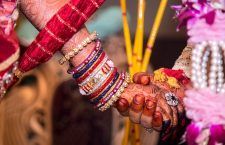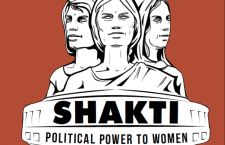On Valentine’s Day, Khabar Lahariya maps the changing arc of love, sex, dhokha in a part of Uttar Pradesh that almost always makes news for other reasons
‘Kisi bhi Ladki ke Saath Chat Kare(Chat with any Girl)’, goes the tantalizing tag-line, with the most interesting and important addition ‘Woh Bhi Hindi Mein! (And that too in Hindi!)’
Started in Paris, with a Series A funding of close to $8 million, the chat/dating app Happn has its strongest user base in London and New York City.
ButHappn is now very much happening in a few (arguably) unmapped spaces dating app data wise – in the small towns and kasbahs of Uttar Pradesh, most notably, Ayodhya.
“If I happen to be crossing by her path, or she happens to be crossing by my gali, we can crash together through Happn”, says 20-somethingRavi, who isa fan of the app used for a few secret and not so secret rendezvous moments.How many dates has he gone on since Happn? This is when Ravi turns demure, “I’ve actually made more friends with boys than girls on this.”
Ravi might just be onto something there. And we’re merely talking numbers. If Tinder is failing on the disproportionate ratio between men and women in urban India – “We’re scum and we know it”, to quote a 30-something male lawyer at a GK pub – the numbers are enough to make any member of the Indian male specie lovesick, and not just on Valentine’s Day. 89% of mobile internet users in India are male, and to go back to Ravi, only 27% are in the smaller towns and cities.
There is more heartening data though. India, in the first few months of 2018, had become the global leader in app downloads – a direct reflection of the exploding smartphone scene and data boom, with Jio leading the pack, at this rate, well-placed to reach the country’s number one telecom operator position by 2021. 4G subscribers in India are expected to rise to 432 million by 2020, and with 75% of mobile internet users in India aged between 20 and 30, the playstoreon Android phones is most definitely a place abuzz with activity.
20-year-old Sania tells us that she downloaded Happn about two months ago, only because she wanted to understand what all the fuss was about. “Nayi cheez thi, seekhne ki lalak bahut hai mujh mein, technology se judi hui, toh bas woh tha (It was a new thing and I have a great desire in me to learn new things related to tech, that’s all).”The way that Happn works is that you can find profiles of those you might be crossing paths with every day on the app and if keen to strike up a conversation or more, you can send him or her a ‘Charm’, like a push notification. If the ‘Charm’ is reciprocated, then you’re on ‘Crush’ stage. Designed with an entirely different lifestyle in mind – where you might be secretly pining for the person you see in your Starbucks queue in the a.m., or on the subway/Tube ride back home in the evenings – small town India once again proves its creative and innovative uses of technology, with the success of Happn. Ravi & Sania are not mere users, like their 20-something urban counterparts, they make the app work for them, or not. Sania deleted Happn recently. “I met this boy in Lucknow where I’d gone for an exam. I mean, we saw each other in the hall. When I came out from the hall, I was wondering if he would be on Happn, and when I checked my phone, he had sent me a request on Happn!” Excitement comes layered with the inevitable fear if you’re female though, “I’d had an unpleasant experience with a boy on Facebook. And I immediately thought of that.” On Facebook, Sania had had a lovesick boy download her photograph and send it back to her, “Why all this?”, she asks and completes her Lucknow story, “I rejected that request. Later, when he approached me for my What’s App number, I lied to him. I told him that I don’t use it.” In the two months that she was on Happn, Sania made friends with “three or four boys”, she tells us, voicing what the data tells us quite simply, “There are so many of them!”
“50,000”, says Anjali, another young app user in Ayodhya, “I had 50,000 friend requests.” Anjali is speaking of What’s App and the way in which it is used locally, wherein unknown numbers will send you messages, usually after midnight – ‘Hiiii’, is how they start. “I confirmed only one”, she adds. Anjali went on a What’s App date with the chosen one she tells us, “jo friendship se kuch aur badalgaye (something more than friendship)”, but she’s broken it off with him last month. She only has a cryptic message in response when we ask why, “It can be bad at bad times, good at good times.” It is a sentiment we find echoed among the young female populace in Ayodhya. Sania too had spoken of it in a similar vein, boiling down all tech and app use to, “If you use it for good, it’s good. If you use it for bad, it’s bad.”
The gender skew in the data is helpful here. Access to a mobile phone continues to be a male prerogative in India, where no more than 38% of women have ownership of their mobile phones, as opposed to a whopping 71% of men. Uttar Pradesh is also amongst the top three states in terms of the highest gender gaps in mobile phone usage – pegged at a 40%. What’s more, the widening of the gap is dramatic as adolescents enter puberty, and girls are restricted/denied access altogether, for reasons of safety and exposure. Having your identity become a known thing is no small fact for a girl on an app that entices the boys with the line ‘Aas-paas ki ladkiyaan patayein (Get it on with girls nearby)’ – best illuminated in the video report, in which almost every young girl we speak to, preferred to cover her face before sharing with us, what was deep inside her heart. Ragni, who’s been in a Whats App pyaar relationship for over a year “bahut achchachal raha hai” , tells us that she is looking forward to getting married to him now. Although we do meet Vandana too, who’s in a serious Facebook love relationship at the moment, “Five months,” she tells us, all smiles.
As we meet the older generation who’re initially shocked at being interviewed for a Valentine’s Day special report, we listen in on the texting methods of yore. You can almost feel the romance when
Deep Narayan shares with us the very prolonged ritual of love letters, “So, what you did was you wrote out how you felt, sometimes you used film songs. Then you had to go and drop the paper, as if by accident, just as she would pass you by, or outside her house, when you were sure she was looking.” If the girl liked you, and your expression of feelings, she would do the same, he adds, “Uttar ka aadan-pradaan chal tareh ta tha (Thus would start a back and forth of interactions).”
Reporting by Kumkum Yadav, Written by Pooja Pande
This Khabar Lahariya article and video, co-published with News Laundry.

